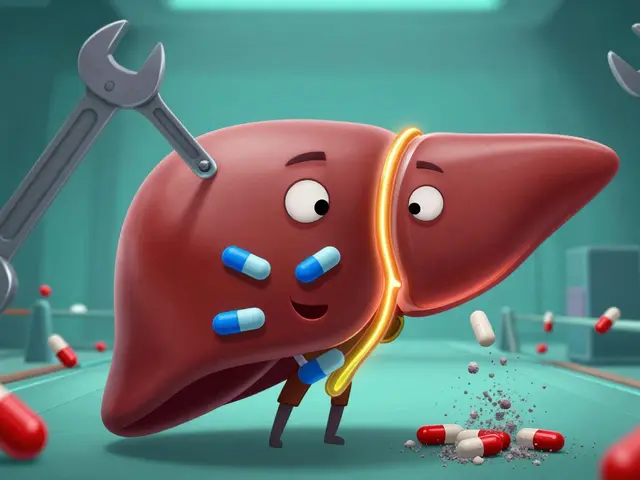Fosamax side effects: common problems and red flags
Fosamax (alendronate) is a common drug for osteoporosis. It helps keep bones stronger, but like any medicine it can cause side effects. Most people tolerate it well, but knowing what’s normal and what’s serious makes a big difference. Below I’ll walk you through what to expect, how to reduce stomach and throat irritation, and when you should call your doctor right away.
Common and mild side effects
These are the things many people notice early on. You might get heartburn, stomach pain, nausea, or gas. Headache, muscle or joint aches are also possible. If a side effect is mild, you can often manage it at home — for example, taking Fosamax exactly as prescribed usually reduces stomach upset.
How to take it to avoid the common problems: swallow the tablet whole with a full glass of plain water, first thing in the morning. Don’t lie down for at least 30 minutes after taking it and don’t eat, drink, or take other meds during that time. Avoid chewing or sucking the tablet. These simple steps cut down on esophageal irritation and heartburn.
Serious but rare risks — what to watch for
There are a few rare but important risks to know. One is esophageal irritation or ulceration. If you get trouble swallowing, persistent chest pain, or new severe heartburn after taking Fosamax, stop the drug and call your doctor.
Another rare problem is osteonecrosis of the jaw (ONJ). It’s most often seen in people who have cancer treatments or invasive dental surgery while on bisphosphonates, but it can happen after regular dental procedures too. If you notice jaw pain, loose teeth, or any non-healing sores in your mouth, see your dentist and tell them you take Fosamax.
Long-term use has been linked to unusual thigh or groin pain and rare atypical femur fractures. If you feel persistent, aching pain in your thigh or groin, especially after minimal or no trauma, report it to your doctor. They may order X-rays and discuss whether a drug holiday or switching medications makes sense.
Who is at higher risk? Older age, steroid use, poor dental health, and cancer therapies increase certain risks. Also, taking calcium, antacids, iron, or magnesium right after Fosamax lowers its absorption. Wait at least 30 minutes before taking those supplements.
Final practical tips: tell your dentist you’re on Fosamax before any extractions or implants. Keep regular checkups and bone density tests as recommended. Don’t stop the drug suddenly without talking to your healthcare provider — sometimes a temporary break or switching to another osteoporosis treatment is better than continuing or stopping without a plan.
If you’re unsure whether a symptom is normal or serious, call your doctor. Fast action on swallowing issues, severe bone pain, jaw problems, or sudden thigh pain can prevent complications. Fosamax helps many people, but knowing how to use it safely is the smartest move.

Fosamax for Osteoporosis: Benefits, Side Effects, and Patient Tips
Fosamax, also known as alendronate, is a popular medication for treating osteoporosis and bone loss. This article explains in plain language how Fosamax works, explores its proven benefits and side effects, and offers practical user tips. You'll learn what to expect when starting treatment, what real studies say, and how to manage risks for better bone health.
Categories
- Medications (50)
- Health and Medicine (46)
- Health and Wellness (34)
- Online Pharmacy Guides (15)
- Nutrition and Supplements (7)
- Parenting and Family (3)
- Environment and Conservation (2)
- healthcare (2)
- prescription savings (1)



